When is the best time to visit Spain?
The info on this page is based on historical averages and might not reflect current conditions. Check with local authorities for the latest travel advice.
Read moreThe best time to visit Spain is from March to May and September to October. From March to May, temperatures rise slowly from 54º to 63ºF, while through September and early October they vary between 63º and 70ºF, meaning days at the beach aren’t uncomfortably hot.
Sunshine isn’t the only reason for visiting Spain during these months. In the spring, all kinds of festivals and celebrations begin taking place – from Las Fallas in Valencia to Feria de Abril in Seville. In the fall, the Fiestas de Pilar extend over 3 days in Zaragoza, the regional capital of Aragon, while in the southern region of Andalucia, the Bienal de Flamenco alternates yearly between Seville and Malaga. September is also when Barcelona celebrates La Mercè—its largest street party of the year—and movie buffs are well taken care of too, thanks to the film festivals in Sitges and San Sebastián.
Elsewhere, nature lovers can observe the cherry blossoms of Valle del Jerte between mid-March and the beginning of May, as well as the grape harvest of La Rioja in September. Spring is also a popular time for religious events like Romería de la Virgen de la Cabeza near Jaén, as well as Semana Santa throughout the entire Andalucia region.
More about the best time to visit Spain
Monthly weather and travel tips for Spain
The first month of the year is a quiet one in Spain, so it’s ideal for those who dislike crowds and don’t mind colder weather. Temperatures can creep up to 61ºF in the warmest southern regions and drop below freezing in high-altitude areas like the Pyrenees and Sierra Nevada. However, the chilly weather brings plenty of snow to these mountain ranges, where the ski resorts are in full swing by January. Unless you’re off to The Canaries, you’ll definitely need your warmest winter coat.
There’s also a few festive events going on in January, including Reyes Magos (Three Kings Day) on January 6 – Spain’s version of Christmas Day. The night before involves hundreds of people parading through the streets on large nativity-themed floats, guided by three wise men (often three lucky local council members) who lead an extraordinary candy-throwing frenzy. January is also a great time to take advantage of cheap flights and slashed prices during the post-Christmas sales, known locally as “las rebajas.”
57°F
High
41°F
Low
12 days
Rainfall
Though it’s often the coldest month of the year in Spain, February isn’t short on reasons to visit – especially if you’re a festival-goer. Down in the city of Cádiz in Andalucia, the thrilling “Carnaval” involves two weeks of costumed processions, drawing thousands of revelers from across the country. The only party with a higher headcount is the Las Palmas de Gran Canaria carnival that’s held in Las Palmas with a different rainbow-colored theme each year.
However, it’s not all loud and flamboyant fiestas. Madrid hosts one of Europe’s biggest celebrations of contemporary art during the Feria Internacional de Arte Contempoáneao, while in the western region of Extremadura, birdwatchers gather to celebrate the arrival of many different species in Monfragüe National Park. There’s also a medieval-themed festival in the high-altitude town of Teruel in Aragon. But bundle up if you go, because temperatures here can drop lower than anywhere else in Spain during this chilly time of year.
57°F
High
41°F
Low
11 days
Rainfall
With the arrival of spring, things start to warm up with each passing day until suddenly summer doesn’t seem so far away. In central and southern Spain, you can probably get away with wearing just a t-shirt in the afternoon as long as there’s no wind or clouds. You’ll want to keep it under a sweater if you’re visiting anywhere north of Madrid. Rainfall can be heavy and unpredictable all over Spain, so be sure to pack a raincoat.
March is also when two of Spain’s best-known cultural events take place. Down in Andalucia, The Festival de Jerez will already be underway in Jerez, showcasing the nation’s most talented flamenco performers in the birthplace and heartland of Spain’s most famous musical genre. But the main event has to be Valencia’s Las Fallas – an amazing festival of relentless drinking and dancing, incredible (and very loud) firework displays, live music, and satirical humor. It all culminates in a mass ritual burning of giant papier-mache effigies (known locally as “ninots”) in the streets – a spectacle you won’t want to miss.
63°F
High
46°F
Low
12 days
Rainfall
In April, spring is in full swing, and on certain coastlines you can steal a few hours of sunbathing on the beach. With wildflowers in full bloom, it’s also a great time of year for exploring parks and more rural areas like the Valle del Jerte in northern Extremadura. Just bear in mind that the skies can open at any moment, so it’s definitely worth packing a raincoat.
Many people venture out to watch the candlelit Semana Santa parades that take place in cities across Andalucia and Castille-Leon. Dressed in multicolored hooded robes, the “brotherhoods” leading the parades each carry two statue-mounted floats from their church to the city’s cathedral and back again. Later in the month, Seville’s Feria de Abril sees locals donning their best flamenco dresses, riding on horseback, and dancing late into the night. Elsewhere, foodies are drawn to festivals like Mercat de Ram in the Catalan town of Vic, and the Feria del Queso (more cheese than you’ve ever seen) in the town of Trujillo, Extremadura.
66°F
High
50°F
Low
11 days
Rainfall
By May, the Spanish countryside is blanketed in bright wildflowers and daytime temperatures begin to rise and stay above 68ºF. In coastal regions like Andalucia and Catalonia, that means the start of beach season – a great time to enjoy some sea and sand before the busier summer months, whereas inland destinations like Granada and Seville offer warm and sunny spring breaks.
Party season is also well underway in May. Take Madrid’s Fiesta de San Isidro for example – a week of near non-stop processions, bullfights, and live music honoring the Spanish capital’s patron saint. Besides that, you’ve got the Fiesta de los Patios de Córdoba (a rare chance to see Córdoba’s flower-strewn courtyards opened up), WOMAD music festival in Cáceres, and the legendary opening parties on the island of Ibiza – Spain’s undisputed clubbing capital. Pack your camera along with clothes suitable for warm and wet weather.
73°F
High
55°F
Low
11 days
Rainfall
It’s the perfect time to be in Spain pretty much anywhere you are. Temperatures across the central and southern regions will be heating up, while the great green north will be much warmer and great for outdoor activities like hiking and mountain biking. Leading from the French Pyrenees to Spain’s west coast, the Camino de Santiago walking trail is well-known and gets crowded in June. However, there are many other trails starting at various points around Spain that take walkers through a range of stunning landscapes on their way to the finish line in Santiago de Compostela.
June is also a great time to visit Spain because of all the different festivals going on. Corpus Christi celebrations take place in Toledo and many other towns, while Barcelona hosts two of the biggest rock, pop, and dance music festivals of the year with Sonar and Primavera Sound. This all comes before a spectacular finale on June 23, Noche de San Juan, when seaside towns across Spain light up with beach bonfires and fantastic firework displays.
81°F
High
61°F
Low
9 days
Rainfall
There’s no denying that July is the busiest month for most destinations in Spain, which has its ups and downs depending on how you look at it. Going out at night, for example, you’ll have a wide choice of lively bars and restaurants. However, you might struggle to find an authentic Spanish atmosphere in the more tourist-friendly resorts of the Costa del Sol or Costa Blanca.
Needless to say, temperatures reach scorching highs by July, so you’ll need to pack plenty of sunscreen. It can be easy to forget the intensity of the heat when enjoying yourself at festivals like Festival Internacional de Benicàssim near Valencia, or the Festival de la Guitarra de Córdoba – a celebration of guitar music like flamenco, rock, blues, and beyond. And that’s not all. Pamplona’s world-famous San Fermín (running of the bulls) takes place over a week, while the Día de Santiago (Feast of St. James) is celebrated spectacularly in Santiago de Compostela on July 25.
86°F
High
66°F
Low
6 days
Rainfall
In August, Spain’s beach resorts fill up with as many locals as tourists who are all determined to escape the searing heat (often +95°F) of inland cities like Seville, Córdoba, and Madrid. Even coastal destinations like Barcelona, Málaga, and Valencia can get too hot and humid to enjoy, which is why many take the chance to explore Spain’s cooler northwestern Atlantic coast. Here temperatures range from the sixties to the low eighties, and the sea breeze eases the heat on exceptionally hot days.
If the cooler weather isn’t tempting enough for you, then maybe the food will be. The region of Galicia is renown for its seafood—in particular, octopus—which is prominently featured on any tapas menu and even has its own dedicated festival (the Festa do Pulpo) held on the second Sunday of August in the small town of Carballiño. Down the road in Cambados, the 5-day Festa do Albariño celebrates Galicia's favorite fruity white wine, while the Fiesta de la Sidra Natural takes place in the neighboring and cider-loving region of Asturias during the fourth week of the month.
That said, you could choose to cool off in a very different way by joining in the tomato-throwing antics of La Tomatina held every August in the Valencian town of Buñol.
86°F
High
66°F
Low
6 days
Rainfall
September brings a welcome break from the sizzling summer temperatures, which means places like Madrid and Seville are no longer too hot to handle. The coolest days in the northern regions tend to hover around the 63ºF, whereas the hottest days along the south coast can still get above 86ºF, so sunscreen is still an essential item to bring along.
This transitioning period is a great time to explore just about anywhere in Spain, and there’s plenty of festivals going on too. One not to miss is the Fiesta de San Mateo, held in the wine-making region of La Rioja during the third week of September in honor of the grape harvest. The regional capital, Logroño, is full of festivities, including the chance to crush grapes with your feet and (of course) plenty of world-class wine. Other events that may tempt you include San Sebastián’s two-week-long film festival, Barcelona’s epic Festes de la Mercè, and the Bienal de Flamenco – the most prestigious of flamenco festivals held alternately in Seville and Málaga.
79°F
High
63°F
Low
8 days
Rainfall
Though summer may still seem a not-too-distant memory, it’s not long before the winter chill starts to bite in October. The telltale signs are numerous, from thick coats and long leather boots to the light-orange leaves cloaking the city squares. Towards the end of the month, temperatures average around the mid-50s in most parts of Spain, although you could probably sneak in a late beach trip to Mallorca or one of the other Balearic Islands where it’s about 20 degrees warmer.
However, the best way to experience autumn in Spain is to embrace the changing temperatures, whether that’s ambling through the glorious Andalusian countryside or surfing the high-rolling waters off the Atlantic coast (in which case, you’d better bring a wetsuit). To get off the beaten path, you could head to the Navarre region’s vibrant Irati Forest on the northeastern border with France, or keep the party going at Zaragoza’s Fiestas del Pilar. Spain’s National Day also occurs on October 12 and is celebrated all over the country.
73°F
High
57°F
Low
11 days
Rainfall
With winter on the horizon, temperatures across Spain are cool and crisp during November, so it’s an ideal time to visit for those who prefer to avoid the heat. The deep autumn colors and bright blue skies create an entirely new natural environment that’s a joy to explore, especially in the rural areas of Andalucia. However, bear in mind that high-altitude areas in the north will be much colder and can even get snow towards the end of the month.
After a full summer calendar of festivals and fiestas, November is when things generally start to settle down. That said, the first day of the month is All Saints’ Day – a national holiday for remembering the dead and enjoying seasonal food. A few days later, sherry lovers celebrate their favorite drink in Jerez for International Sherry Week, while the locals of Potes—a small village near Santander—honor their traditional drink at the Festival de Orujo. You can also attend international jazz festivals in Granada and Madrid, where scheduled events last the entire month.
64°F
High
50°F
Low
11 days
Rainfall
December’s chilly temperatures are redeemed by an array of Christmas markets up and down the country, from Bilbao and Barcelona to Madrid and Seville. They are treasure troves of traditional crafts, nativity scenes, and artisanal products like turrón and manchego cheese. Christmas Day itself is celebrated as a national holiday, though the major celebrations are reserved for January. New Year’s Eve is a much bigger party, when Spaniards attempt to eat 12 grapes (one for each chime) at the stroke of midnight.
On a regional level, there are fewer events than in other months, but Málaga’s spectacular Christmas lights have become something of an attraction, especially on the night they’re turned on along Calle Larios. Just down the road, the town of Torrox draws thousands to its annual Migas Festival – a celebration of “migas,” the region’s most traditional dish. For those who would rather spend winter on a beach, look no further than the subtropical Canary Islands where temperatures remain comfortably between 63º and 74º throughout the entire month.
59°F
High
43°F
Low
12 days
Rainfall
Weather and temperature in Spain
When you think “Spain,” a scene of bright blue skies, white-sand beaches, and radiant sunshine probably springs to mind. That would be an accurate representation of the country in many areas, but Spain can actually be broken down into five climatic regions. First there’s the cool and humid climate of the Atlantic coast, home to cities like Santander and San Sebastián. Then you’ve got the vast dry areas of central Spain, including Madrid, Valladolid, and Zaragoza. Meanwhile, Mediterranean destinations like Barcelona, Valencia, and Alicante are mild and sunny in the spring and fall, while the mountainous landscapes of the Pyrenees and the Sierras can get very cold. Finally, southern Andalusian cities like Malaga and Almeria are much warmer during these times of the year – not to mention the Canary Islands, which are closer to Africa than mainland Spain and so experience tropical temperatures even in the winter.
| Jan | Feb | Mar | Apr | May | Jun | Jul | Aug | Sep | Oct | Nov | Dec | ||
|---|---|---|---|---|---|---|---|---|---|---|---|---|---|
| Madrid | High | 52°F | 52°F | 61°F | 65°F | 75°F | 85°F | 93°F | 91°F | 81°F | 70°F | 59°F | 54°F |
| Low | 34°F | 34°F | 40°F | 46°F | 51°F | 60°F | 66°F | 66°F | 59°F | 52°F | 42°F | 35°F | |
| Rainfall | 12 days | 11 days | 12 days | 12 days | 12 days | 9 days | 6 days | 6 days | 9 days | 12 days | 12 days | 13 days | |
| Barcelona | High | 57°F | 56°F | 62°F | 65°F | 71°F | 79°F | 84°F | 84°F | 78°F | 73°F | 64°F | 58°F |
| Low | 41°F | 40°F | 47°F | 51°F | 57°F | 65°F | 70°F | 70°F | 65°F | 58°F | 49°F | 42°F | |
| Rainfall | 12 days | 11 days | 12 days | 12 days | 12 days | 9 days | 6 days | 6 days | 9 days | 12 days | 12 days | 13 days | |
| Seville | High | 61°F | 61°F | 68°F | 72°F | 83°F | 88°F | 93°F | 94°F | 85°F | 78°F | 67°F | 63°F |
| Low | 43°F | 41°F | 48°F | 53°F | 58°F | 64°F | 68°F | 69°F | 65°F | 60°F | 51°F | 45°F | |
| Rainfall | 12 days | 11 days | 12 days | 12 days | 12 days | 9 days | 6 days | 6 days | 9 days | 12 days | 12 days | 13 days | |
| Málaga | High | 61°F | 60°F | 65°F | 69°F | 76°F | 82°F | 87°F | 88°F | 82°F | 75°F | 66°F | 62°F |
| Low | 45°F | 44°F | 49°F | 54°F | 58°F | 64°F | 69°F | 72°F | 67°F | 60°F | 52°F | 46°F | |
| Rainfall | 12 days | 11 days | 12 days | 12 days | 12 days | 9 days | 6 days | 6 days | 9 days | 12 days | 12 days | 13 days | |
| Valencia | High | 63°F | 61°F | 66°F | 70°F | 76°F | 83°F | 87°F | 87°F | 82°F | 78°F | 68°F | 63°F |
| Low | 43°F | 43°F | 48°F | 53°F | 59°F | 66°F | 72°F | 73°F | 67°F | 60°F | 51°F | 44°F | |
| Rainfall | 12 days | 11 days | 12 days | 12 days | 12 days | 9 days | 6 days | 6 days | 9 days | 12 days | 12 days | 13 days | |
| Granada | High | 57°F | 56°F | 64°F | 69°F | 79°F | 86°F | 94°F | 94°F | 83°F | 76°F | 64°F | 59°F |
| Low | 36°F | 36°F | 42°F | 48°F | 53°F | 60°F | 65°F | 66°F | 59°F | 53°F | 44°F | 37°F | |
| Rainfall | 12 days | 11 days | 12 days | 12 days | 12 days | 9 days | 6 days | 6 days | 9 days | 12 days | 12 days | 13 days |
Weather data provided by Forecast.io
Cost of stay in Spain
Want to travel smart? Here you can check out the average cost of accommodations per night in Spain.
-
0
49
98
147
196
- $127 Jan
- $143 Feb
- $148 Mar
- $162 Apr
- $158 May
- $169 Jun
- $184 Jul
- $187 Aug
- $166 Sep
- $160 Oct
- $141 Nov
- $152 Dec
-
0
49
98
147
196
- $96 Jan
- $111 Feb
- $120 Mar
- $123 Apr
- $122 May
- $129 Jun
- $154 Jul
- $161 Aug
- $121 Sep
- $119 Oct
- $104 Nov
- $124 Dec
-
0
49
98
147
196
- $32 Jan
- $37 Feb
- $42 Mar
- $46 Apr
- $45 May
- $48 Jun
- $51 Jul
- $50 Aug
- $44 Sep
- $44 Oct
- $38 Nov
- $44 Dec
-
0
49
98
147
196
- $117 Jan
- $131 Feb
- $145 Mar
- $142 Apr
- $152 May
- $176 Jun
- $205 Jul
- $208 Aug
- $160 Sep
- $147 Oct
- $126 Nov
- $160 Dec
-
0
49
98
147
196
- $75 Jan
- $84 Feb
- $92 Mar
- $96 Apr
- $98 May
- $103 Jun
- $110 Jul
- $113 Aug
- $101 Sep
- $97 Oct
- $82 Nov
- $87 Dec
The best places to visit in Spain
Check out some of the most popular cities, places to visit, and things to do in Spain!

Madrid
Popular in July
City Walks, Museums, Culture

Barcelona
Popular in July
Architecture, City Walks, Sightseeing

Seville
Popular in May
Old Town, City Walks, Tapas

Málaga
Popular in August
Old Town, City Walks, Sunny
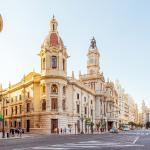
Valencia
Popular in August
Old Town, City Walks, Architecture

Granada
Popular in October
Old Town, History, Tapas
Ready to book a trip to Spain?
Enter your dates to find the perfect place to stay in Spain!
What other travelers say about their trips to Spain
-
The city is simply a feast for the eyes! A real walking city. I came to see the architecture. It was all that I could have hoped for. The city is clean and inviting. I felt very comfortable wherever I went.
Rex Barcelona January 2024 -
"La Ciudad Encantada" is amaaaaaaaaaaazing, we loved it and we will definitely come back to enjoy the city, specially the museum of archeology and the cathedral. "Las casas colgadas" are beautiful and the bridge next to them too. But the best thing was the vibe of the city. Beautiful.
Cuenca January 2024 -
Beautiful city. Lovely food. We only stayed one night meeting family before heading to Zaragoza.
Madrid January 2024 -
Very atmospheric city. Lots of museums and cathedrals. Wonderful places to eat and everyone is very friendly.
Zaragoza January 2024 -
Wonderful city with lots to do. I did the bike tour which I recommend as well as the palace and walking around old town. Loved the Ritero Park.
ingrid Madrid January 2024 -
I had only 4 full days to enjoy Barcelona. I stayed in the Old Town, visited two opposite mountain-like places (with a Church and with a Fortress), walked a lot in the city. The weather was simply perfect for early December. Did not go inside the notorious Sagrada Familia :)
Davron Barcelona January 2024
-
We have visited Benalmadena on a few occasions so we were very comfortable getting around. There is a lot to see and do in the area and trains and buses are easily accessible and cheap. The walk along the boardwalk from Benalmadena to Torremelinos is great. The walk up into the town is a bit tough (we are in our mid 70's) but so worth it. The walk down is a breeze.
Pauline Benalmádena February 2024 -
Beautiful and calm city. Tons of restaurants and bars, as well as shops. It’s very walkable/bike friendly. Definitely worth visiting.
Burgos February 2024 -
Seville is one of the most amazing, beautiful, old cities I have ever been. Around each corner is another surprisingly beautiful building, neighborhood, etc. Food is amazing and just the atmosphere of deep history is inspiring and exciting.
Seville February 2024 -
Magnificent sandy beach - sunny weather - sunsets - coastal walks - peaceful.
El Cotillo February 2024 -
we had a great time in Las Palmas. It is a fantastic city. It offers an amazing quantity of restaurants, theaters, music, nightlife, and fantastic beaches. It is safe and friendly. We ate well and did some awesome shopping. We are certainly going back there. The whole island is fantastic. We found a great Colombian Restaurant and also a Cuban restaurant at the Porto Market, which we went back to several times.
Betulia Las Palmas de Gran Canaria February 2024 -
We truly enjoyed the peace and quiet offered in Las Indias and are pleased with the decision to stay away from the more crowded areas of La Plama.
Las Indias February 2024
-
The buiding was very old but convenient, with a lot of details. It had a lot of history. The owner was the 8th generation of the family.
Yvonne Ejea de los Caballeros March 2024 -
Beautiful. Must reserve tickets to visit the Sagrada Familia & Park Güell at least one week in advance or more, especially when visiting during a religious holiday.
Noor Barcelona March 2024 -
Fuimos a ver las fallas y nos gustó mucho. Lo recomiendo
Valencia March 2024 -
I love this place. It is beautiful, colorfull city! A lot of awesome monuments and places.
Wiktoria Barcelona March 2024 -
Cuenca old town is a must in any Spain trip. We were so fortunate to experience Holy Week festivities and to share with the locals. In addition, we experience intermittent snow which was a wonderful experience. The old town is a jewel with many options to get lost through the streets and to meet locals.
Juan Cuenca March 2024 -
Always charming and exotic although a bit touristy. Train station serves as a good hub for travelling to the other towns in Andalusia. The palace and cathedrals are must see.
Seville March 2024
-
Such a quaint city--lots to do. Loved the cooking class at the market and Flamenco dancing.
Aditi Seville April 2024 -
Pleasantly surprised of how lovely the city was. The museum was free and it encompasses the full scope of history of Galatian history, local shops, and people make this a great layover. If you are doing the Santiago Portuguese Camino give yourself a rest day in PonteVedra
Pontevedra April 2024 -
Madrid is a beautiful city to visit. We took the metro into the city from the airport which was easy to navigate, inexpensive and efficient. It is a lovely city to walk around and explore with a huge choice of lovely restaurants, bars, cafes and shops.
anne Madrid April 2024 -
Beautiful city, I was surprised at how cosmopolitan Tarragona is. It is a beautiful well kept city perfect for walking.
Tarragona April 2024 -
Nice location, however, the town seemed near deserted. We found one grocery store and one open restaurant.
Dunnigan Minaya April 2024 -
The streets are narrow and confusing. I got lost a lot. The city is on hills so lots of inclines. But the food was great…a very unique experience. If you can handle the walking and have a gps on your phone, you will love it.
Santiago de Compostela April 2024
-
Best advice is to book tickets for anyplace you might need tickets before you go. Most are refundable up to 24 hrs before admission. We did not anticipate the early April crowds and were locked out of some major sights. This is an easy walking city but has public transportation if wanted. We appreciated the hop-on hop-off busses for a look at parts of the city we would not have had time to explore. Excellent food at reasonable prices almost everywhere!
Judith C Barcelona May 2024 -
Great city lots to see, tons of dining options, great for walking
angel Barcelona May 2024 -
Old town lovely to stroll through but also make sure you walk across the Concha to Miramar, stunning
petra San Sebastián May 2024 -
a city to fall in love with. super museums, good food.
Madrid May 2024 -
Beautiful city with much to do inside and outside of the historic district.
Seville May 2024
-
Barcelona is an amazing Spanish city! Food is fabulous! People are so nice! Attractions are phenomenal too!
Barry Barcelona June 2023 -
We were passing through Negreira as we were walking the Camino Frances. It was a necessary overnight stop for us. Our Piso Bonito apartment was great. We didn't find a lot great about the town of Negreira, but for an overnight on the Camino Frances, it was fine.
Alison Negreira June 2023 -
Beautiful city, we had a wonderful time because of all the people, bars, life! The cathedral is one of the most beautiful ones that I’ve been to. Incredibly beautiful. Friendly people. The bad thing is that’s it’s impossible to park there!
Zaragoza June 2023 -
Lots of great restaurants within walking distance at a lower price point than we found elsewhere in Barcelona. Most places closed pretty early which was unfortunate with jet lag, but there were a couple restaurants open till midnight and a 24 hour market.
Madeline Sant Adria de Besos June 2023 -
A city of twenty excellent museums. Everyone knows the Prado and the Thyssen and the Reina Sofia, but there are also the Galdiano and the Descalzes Reales; this trip I visited the Archeological, the Sorolla, the Ceralba, the City History. Unexpected streets lead to handsome old plazas and fine cafes. A great walking city.
Madrid June 2023 -
A wonderful mid-size metropolis with few tourists but many delightful small museums and excellent cafes and restaurants.
Zaragoza June 2023
-
This gorgeous hostel has private rooms with their own bathrooms and it was well worth the few extra Euros for a restful night in a calm, quiet, peaceful setting. Our room and bed were impeccably clean and comfortable, and the shower was great! The owners were friendly, warmly hospitable and we would have stayed longer if could have.
Lennis Fonfría July 2023 -
Sightseeing is just wonderful and it is perfect for all ages. Amazing view, the trail , amazing beaches with lots of fun water activities. We had an amazing experience with "sensation" water boat and kayak by " Lemon Kayak". The top view of Lloret castle is just breathe taking. Accessable transportation and lots of hotel to choose from. We recommended to include Lloret de Mar in your bucketlist.
Evangelina Lloret de Mar July 2023 -
A beautiful small Spanish coastal town. Lots of great restaurants and shopping. The beaches are lovely and have nice amenities, beach bars, toilets, restaurants etc. you can walk around the entire down town in about 20 minutes.
Adam Sitges July 2023 -
Zona rica em praias fluviais com águas termais bem quentes, onde podemos alternar entre o banho quente e o banho frio. Evolvência muito verdejante, cuidada onde se come bem e barato.
Luís Filipe Jesus Simoes Lobios July 2023 -
Perfect city. Wide squares, streets with wonderful architecture. Great atmosphere and food. Long, wide beaches and warm sea. We'll be coming back here for sure!
Predrag Valencia July 2023 -
We enjoyed walking the streets and finding unique stores. Lots of good surprises around every corner. It is a great town!
Kim Torremolinos July 2023
-
Beautiful city! Hotel is in short walking distance to restaurants and attractions. For pilgrims like us, you can get your at the cathedral which is one of the main attractions and very close by. Try their local cider ask Jesus) and the seafood paella at La Guininna (sp).
Leah Oviedo August 2023 -
Beautiful apartment with lots of room. Great kitchen. Grocery store is not far. Quiet neighborhood. Hosts were easy to reach if needed.
Ursula Navarrete August 2023 -
I likexit because i have 1 apartnent here but iys nice is not s partyvplace justcsgreat holliday place
Puerto Rico de Gran Canaria August 2023 -
Its near the airport and if yuonnot like pay 150 euro hotell this is great. Taxi airportv 7 euro. Verry good
anders El Prat de Llobregat August 2023 -
Such a great surprise. Close to Malaga and we took a day trip to Mijas and Granada. We were visiting with our family plus a 2 year old and there were so many fun family activities Aquarium, And lots of beautiful parks to stroll thru
Benalmádena August 2023
-
This property was built in 2007, and we thought it was recently built, because it looks so new. It is very well maintained. The room was very spacious, and super clean. The owner was very nice and accommodating for our group. Breakfast is included. I have a new appreciation for hostals. I would definitely stay here again.
Marian Ribadumia September 2023 -
Great location on the Camino route. We loved the balcony overlooking the cows in the pasture and the bed was comfortable. Room was tastefully decorated.
Jodi Las Herrerías September 2023 -
Magical! A place to not just relax but literally to dissolve in and fall in love with. Good place to eat: El Tostadero and Bar Pejin.
San Vicente de la Barquera September 2023 -
Great scenery, nice people. Great local bakeries! Safe and sweet little village. Worth traveling there….
Ingolf Graus September 2023 -
Puerto de Pollensa is a very pleasant and family-friendly city, full of restaurants and shops and with beautiful beaches. It is very safe and invites you to walk at dusk or at night along its waterfront where you can see families enjoying the tranquility of the place. The people of Puerto de Pollensa are very friendly. The proximity to other points and beaches make it the ideal place to base yourself and enjoy a beautiful vacation in the Balearic Islands.
Martin Port de Pollensa September 2023 -
I came to visit the cathedral ( which was well worth the visit) but I was so surprised that I really enjoyed the city also…it is a clean city with many things to do. Although it is a main pilgrimage site most souvenirs were sold in stores…..definitely a plus !!
Sandra Santiago de Compostela September 2023
-
An amazing city full of history & culture. Hows so much to offer for the traveler, families, or singes. Has some lovely beaches for swimming & relaxing, great restaurant's too.
Farrell Barcelona October 2023 -
I love Malaga!!! It is very cultural and lots of great tour guides to educate you about Malaga. Bus system is superb and lots of places to have menu del dia.
Ana R Málaga October 2023 -
The City itself is charming with some interesting sites. The proximity of the Alhambra makes it a must-visit.
Thomas Granada October 2023 -
Segovia is obsoletely fabulous. It was a short walk to everything & there was tons of ancient history to be seen there. The aquaduct was 2000 years old & built with no mortar - amazing & huge - much bigger than the pictures show. Lots of stores & restaurants to walk to. It had a great ambiance everywhere we went - people safely walking around the streets until midnight.. Lots of friendly families & people with their dogs.
Heather Segovia October 2023 -
Of the whole southern coast of Spain, we like Fuengirola the best. It has clear shallow water and soft sand on the beach for children, It is gorgeous to walk there at night on the walkways, it's calm, the palm trees and paved stone barriers out in the water are beautiful to walk on. There are Nice restaurants and stores all along the edge of the beach.
William & Larisa Fuengirola October 2023 -
Plaza España is a must see. The cathedral is also the most spectacular church I’ve seen. The river cruise was a bit pricey but I enjoyed the view from the river.
ann Seville October 2023
-
Really nice, quiet place close to the sea. If you need more excitement - bigger city - Costa Adeje is very close:) Best beach in Callao Salvaje is playa de Ajabo. In Costa Adeje there are de Fanabe and del Duque. Nice restaurant with seafood - El Delfin.
Stanislaw Callao Salvaje November 2023 -
This is an amazing place. We had an extraordinary weekend with children, parents and grandparents. This white towns and the other nearby are beautiful places to visit. And hicking in the the Mountains National Park is such an experience!! Very much recommended for pure aire and safe exercising
Amparo Grazalema November 2023 -
Wonderful city, friendly people and delicious pintxos! Beautiful beach, plenty to do and see. We went at the end of November when the marathon was on, which was great and the city had a real buzz.
Emma San Sebastián November 2023 -
I always love returning to Malaga, my favorite place in all of Spain
Málaga November 2023 -
It is very quaint, very family oriented very walkable has everything you would need on your vacation
Igualada November 2023 -
Haro is a small city in transition. The population is aging and shop owners retire. Younger generation are not interested in taking over the shops. Some investment is coming in , such as large grocery stores. People love their city and I hope there is a renewed interest in living in the city. There are several very large bodegas that are worth exploring. One of the most notable outside the city is Lecea Bodega. A hidden gem worth the trip.
Haro November 2023
-
Is quiet, less expensive, good restaurants and bars with grate service and grate people speaking english, and ready to share info and reccomend places to visit, have water activities, hiking or relaxing.
Ichim Acantilado de los Gigantes December 2023 -
Restaurants cater for gluten free. Taxis from centre very slow. It’s a lovely place to walk around.
Playa Blanca December 2023 -
Charming cobbled streets, inviting cafes, wonderful seafood.
Hannah Llanes December 2023 -
El Campello is a great location situated in between Alicante and Benidorm. Easy access by car or public transport. Dormio apartments are Perfecto 😊🇪🇦😊
Bounden El Campello December 2023 -
What can you say about Madrid - it is one of the best cities in the world. Don't miss the Retiro, Plaza Mayor, and be sure to eat a bocadillo de calamares, and chocolate con churros.
Madrid December 2023 -
This is a place where your expectaions meets the highest standards. We spent a wonderful Christmas Holidays in Bibo Suits
Mészáros Sierra Nevada December 2023
More inspiration for your Spain trip
-

14 culinary treats to enjoy in Madrid
From tapas to calamari, feast upon Iberian cuisine that’s as lively as the city itself.
-

Learn it from a book: 27 must-have Spanish Phrases
Key Spanish phrases to make your stay in Spain totally seamless.
-

Spain’s most enticing wine routes: Rioja Alta
Take it slow in mellow La Rioja, Spain’s wine-making heartland.
-

Spain’s most enticing wine routes: Rioja Alta
Take it slow in mellow La Rioja, Spain’s wine-making heartland.
-

A seasonal guide to Barcelona
Art, architecture and allioli, Barcelona has it all.
-
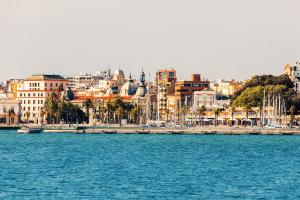
Destination inspiration: Cartagena, Spain
Feast your eyes on this ancient port town, where the past is in plain view.
-

Bucket List / Budget List: Barcelona
Unmissable music, cultural icons and chic hotels. Explore Barcelona, whatever your budget.
-

Destination inspiration: Lloret de Mar, Spain
Let your hair down in the Costa Brava’s most vibrant seaside resort.
-
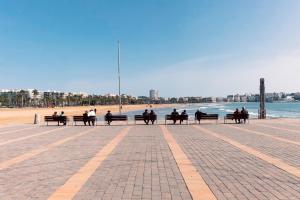
Destination inspiration: Salou, Spain
This resort town on the Catalonian coast promises minimum hassle and maximum relaxation.
-

Head to Spain for a last-minute summer holiday
For spontaneous travellers, nothing beats Spain as a summer holiday destination.
-

A seasonal guide to Malaga
Whichever season you visit Malaga in, expect festivals, museums and world-class beaches.
-

Destination Inspiration: Granada, Spain
Prepare to fall hopelessly in love with Spain's ‘Moorish jewel’.
-

7 of Spain’s top tapas cities
Tapas lovers have spoken – here are some of Spain’s best spots for food.
-
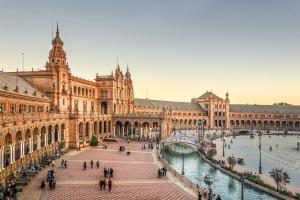
Destination inspiration: Seville, Spain
A city of Moorish architecture, fiery flamenco and Andalusian delicacies.
-

3 arty apartments from Barcelona’s modernist era
Apartments that showcase the style of the revolutionary ‘Catalan modernist’ movement.
-

Where to stay near Barcelona’s Sagrada Familia
The 7 best apartments a short walk from Gaudí’s fantastical but unfinished church.
-

Where to stay near Barceloneta Beach
5 sunny apartments close to Barcelona’s beachfront.
-
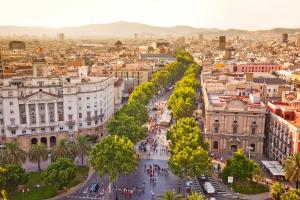
Where to stay near Barcelona’s La Rambla
5 self-catering stays within walking distance of Barcelona’s most vibrant street.
-

Where to stay near Madrid’s Plaza Mayor
4 stylish self-catering apartments around Madrid’s grandest square.
-
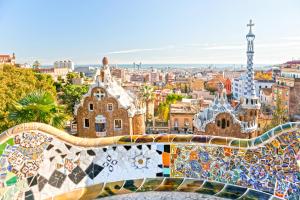
Where to stay near Barcelona's Park Güell
4 of the best apartments in Barcelona’s vibrant Gràcia district.
-

Where to stay near Barcelona's Passeig de Gràcia
5 of the best apartments on Barcelona’s most stylish street.
-

Where to stay near Madrid's Puerta del Sol
5 homely apartments around Madrid’s historic square.
-

Where to stay near Barcelona’s Camp Nou
4 self-catering stays within minutes of the FC Barcelona stadium.
-

Where to stay near Madrid's Gran Vía
4 homely apartments within walking distance of one of Madrid’s busiest streets.
-

Where to stay near Madrid's Royal Palace
6 cosy apartments around Madrid’s most royal residence.
-
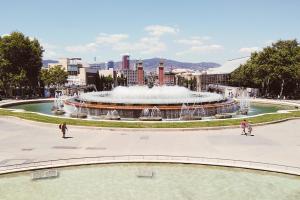
Where to stay near Barcelona’s Magic Fountain
4 Barcelona apartments close to the famous dancing fountain.
-
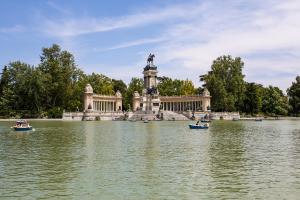
Where to stay near Madrid’s Retiro Park
4 apartments within a short stroll of the park gates.
-

Where to stay near Madrid's Plaza de Cibeles
5 cosy apartments around one of Madrid’s best known squares.
-
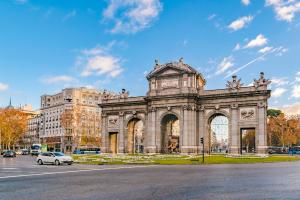
Where to stay near Madrid's Puerta de Alcalá
5 apartments within walking distance of the 18th-century granite gate.
-
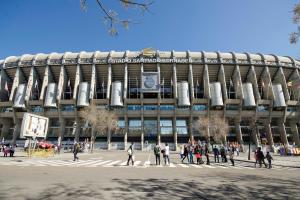
Where to stay near Madrid’s Estadio Del Bernabeu
4 of the best apartments around Real Madrid’s home turf.
-

Where to stay near Barcelona’s Palau de la Música
5 apartments to explore the capital of Catalan culture.
-

Spain’s 6 prettiest campsites
Pitch a tent on a remote mountainside or barbecue on your bungalow porch with beach views.
-

The best of Spain’s natural beauty
From dreamy waterfalls to surreal mushroom-shaped rocks, Spain is a nature-lover's dream.
-

Where to stay near Madrid’s Golden Triangle of Art
5 apartments in the midst of Madrid’s art district.
-
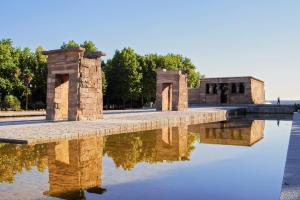
Where to stay near Madrid's Templo de Debod
4 apartments close to this ancient Egyptian monument.
-

A guide to paella in Spain
Bring your appetite, friends, and a big spoon.
-

Spain's best pet-friendly properties
Because your furry friends deserve a sunny getaway too.
-

Spain's best city beaches
Where the Spanish seaside meets cosmopolitan centres.
-
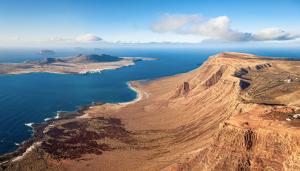
6 of Spain’s hidden islands
Including the island once considered to be the end of the world.
-

5 of Spain's most magical castles
Explore cloud-top fortresses and sprawling hanging gardens.
-

A guide to northern Spain
Journey through Spain's northern territories for a lesser-known but spectacular trip.
-

Spain's 6 most popular hotel bars
At these watering holes, good drinks and design are on the menu.
-

Spain's most romantic destinations
Wander past tumbledown lemon-coloured homes and cross tiny footbridges in walled cities.
-

Where to stay near Barcelona's Fundació Joan Miró
5 accommodations within minutes of Miró’s modern art collection.
-

The modern art guide to Spain
Admire Joan Miró's minimalism in Barcelona and Dali's theatricality in Figueres.
-

7 restful rooftop pools in Spain
Gaze out over Barcelona's spires or look out across golden countryside.
-

Spain's best dog-walking beaches
We’ve found Spain’s most dog-friendly beaches so you can stop searching and start walking.
-

In search of Spain's noteworthy cocktail bars
A country home to palatial art deco hideouts and underground artisanal institutions.
-

7 fantastic family-friendly hotels in Spain
Great locations, friendly staff and excellent facilities; top picks for your family trip.
-

The top 8 hostels in Spain
From happening Barcelona to sunny Málaga, Spain has its fair share of standout hostels.
-

7 Spanish beaches best reached by car
Drive Spain’s glorious coastline to discover secret beaches far away from the crowds.
-

A food lover’s road trip in southern Spain
Try bluefin tuna in Zahara de los Atunes and drink back sherry in Jerez.
-
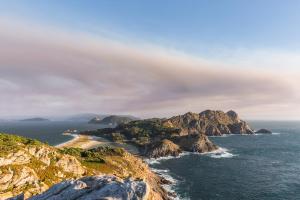
6 of Spain’s hidden islands
Including the island once considered to be the end of the world.
-
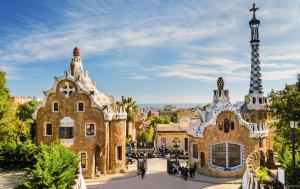
6 destinations for a Spanish sabbatical
Soak up the sun and forget your 9 to 5 in these Spanish long-stays.
-

48 hours in Barcelona, Spain
Featuring beaches, churros and the art of Salvador Dalí.

